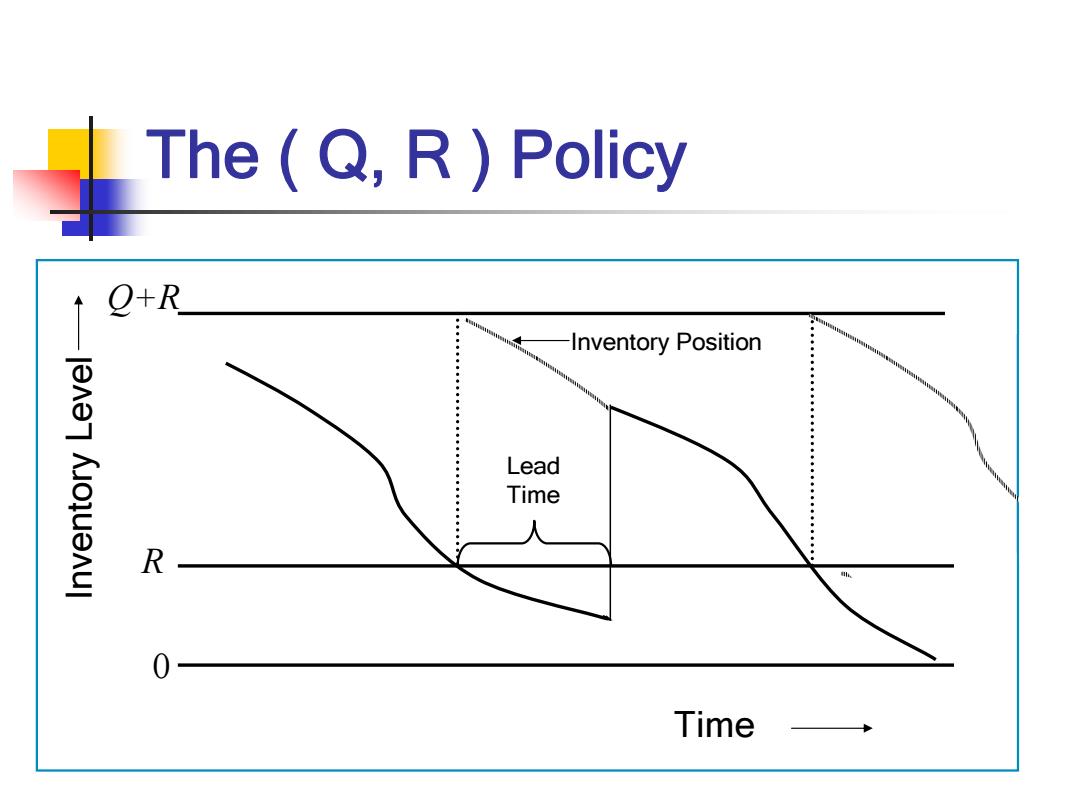
The(Q,R)Policy Q+R Inventory Position Lead Time R 0 Time
The ( Q, R ) Policy Time Inventory Level Q+R R 0 Lead Time Inventory Position
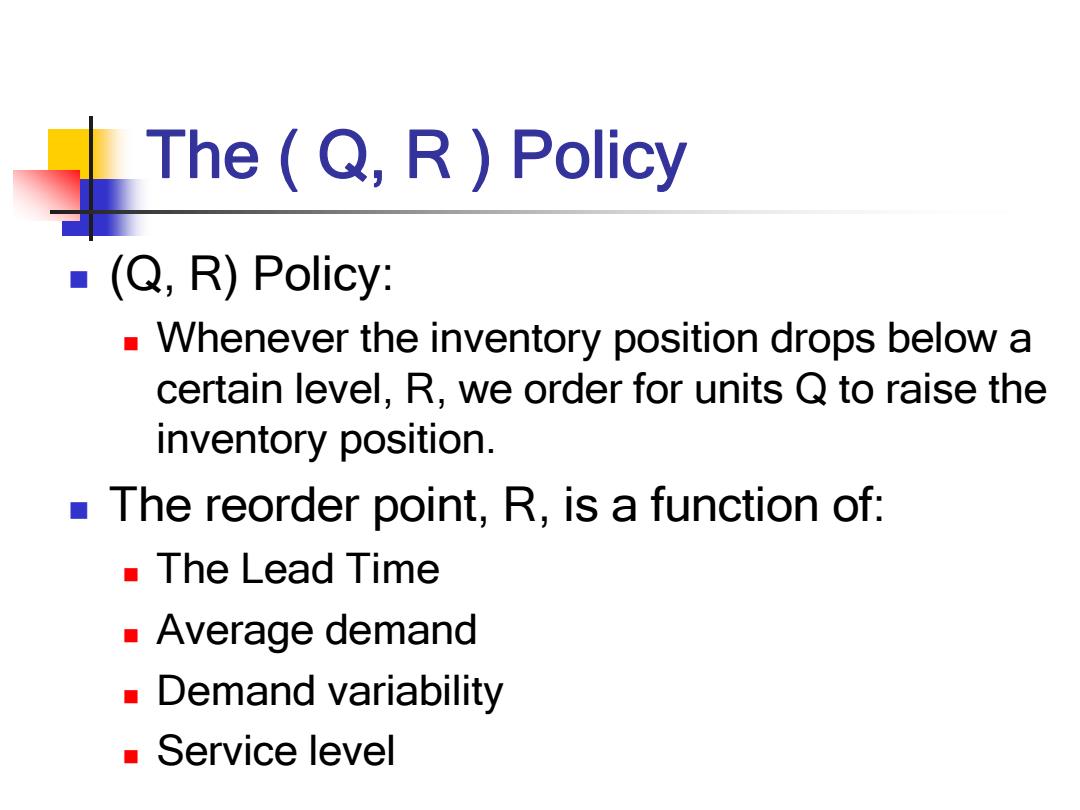
The(Q,R)Policy ■(Q,R)Policy: Whenever the inventory position drops below a certain level,R,we order for units Q to raise the inventory position. The reorder point,R,is a function of: The Lead Time Average demand Demand variability Service level
The ( Q, R ) Policy (Q, R) Policy: Whenever the inventory position drops below a certain level, R, we order for units Q to raise the inventory position. The reorder point, R, is a function of: The Lead Time Average demand Demand variability Service level
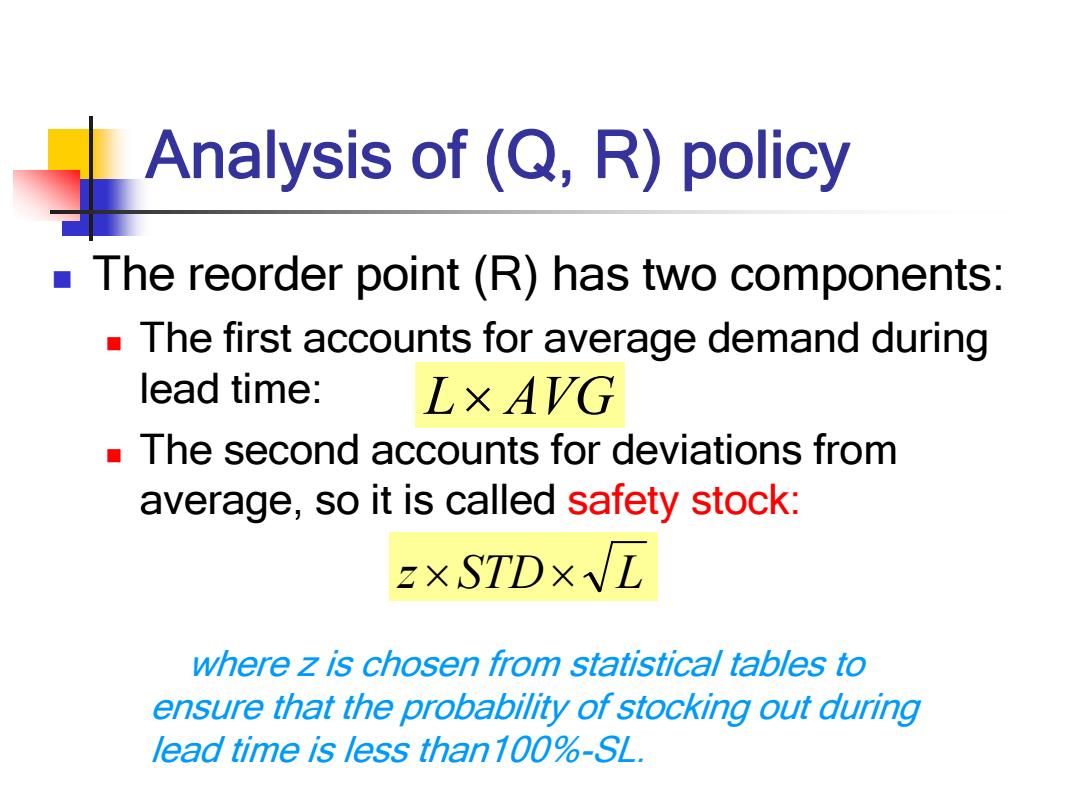
Analysis of(Q,R)policy The reorder point (R)has two components: The first accounts for average demand during lead time: LXAVG The second accounts for deviations from average,so it is called safety stock: zX STDx√L where z is chosen from statistical tables to ensure that the probability of stocking out during lead time is less than 100%-SL
Analysis of (Q, R) policy The reorder point (R) has two components: The first accounts for average demand during lead time: The second accounts for deviations from average, so it is called safety stock: × AVGL ×× LSTDz where z is chosen from statistical tables to ensure that the probability of stocking out during lead time is less than100%-SL
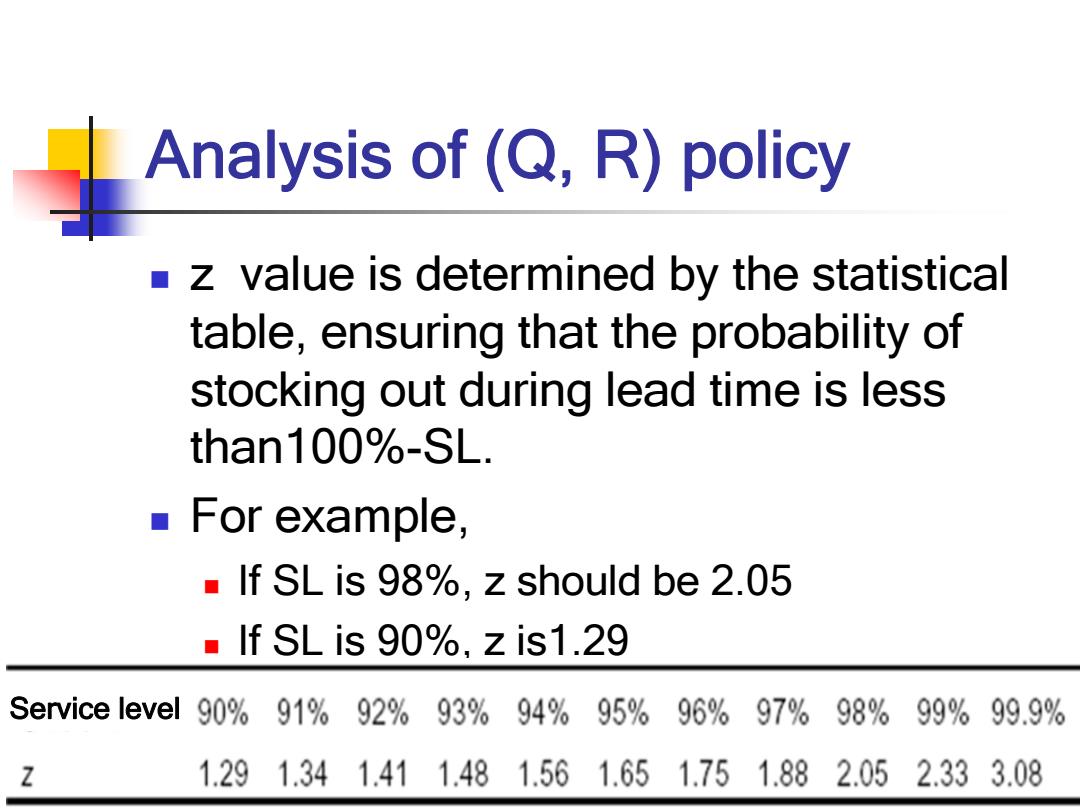
Analysis of (Q,R)policy z value is determined by the statistical table,ensuring that the probability of stocking out during lead time is less than100%-SL. For example, If SL is 98%,z should be 2.05 ■If SL is90%,zis1.29 Service level 90% 91%92%93% 94%95% 96%97% 98% 99%99.9% Z 1.291.341.411.481.561.651.751.882.052.333.08
Analysis of (Q, R) policy z value is determined by the statistical table, ensuring that the probability of stocking out during lead time is less than100%-SL. For example, If SL is 98%, z should be 2.05 If SL is 90%, z is1.29 Service level
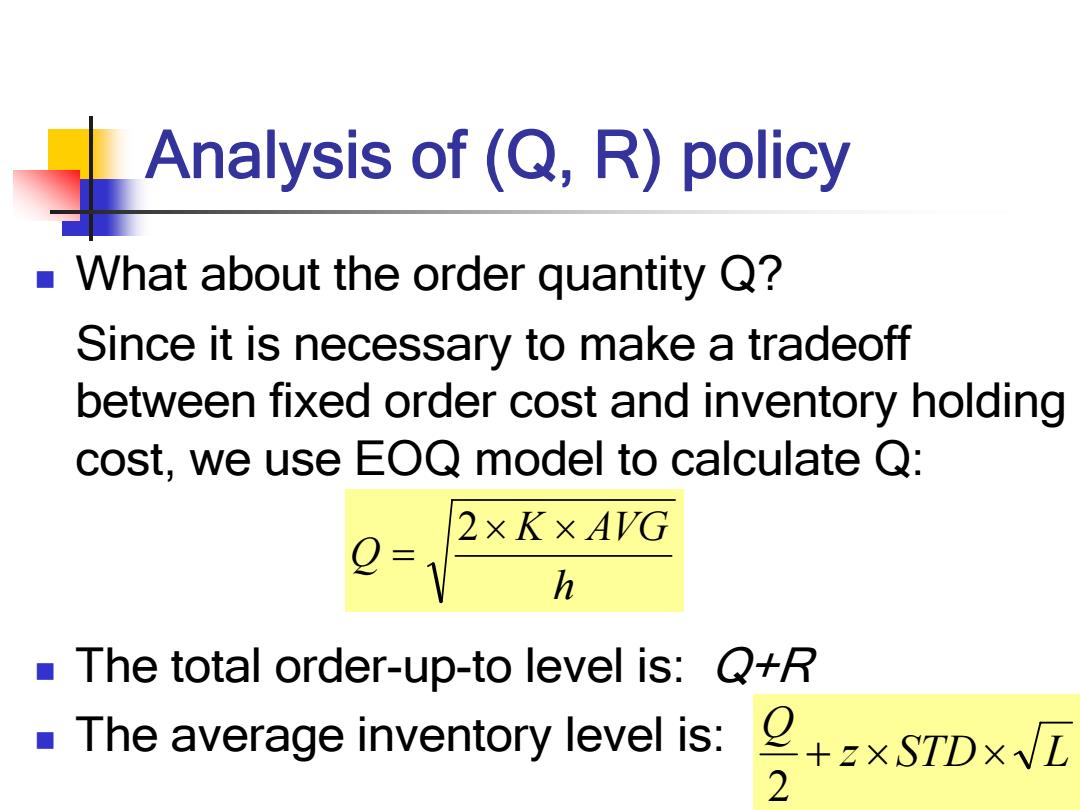
Analysis of (Q,R)policy ■ What about the order quantity Q? Since it is necessary to make a tradeoff between fixed order cost and inventory holding cost,we use EOQ model to calculate Q: 2×K×AVG h The total order-up-to level is:Q+R The average inventory level is:+xSTDx 2
Analysis of (Q, R) policy What about the order quantity Q? Since it is necessary to make a tradeoff between fixed order cost and inventory holding cost, we use EOQ model to calculate Q: The total order-up-to level is: Q+R The average inventory level is: h AVGK Q ×× = 2 LSTDz Q ××+ 2